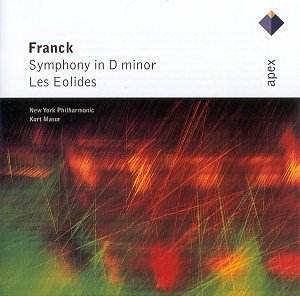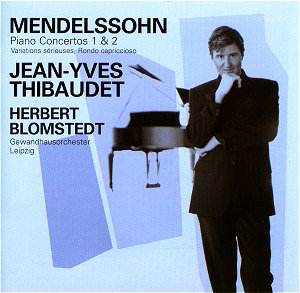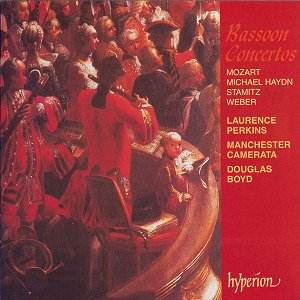 Composer: César Franck
Composer: César Franck
Works: Symphony in D minor, Les Eolides
Performers: New York Philharmonic Orchestra/Kurt Masur
Recording: Recorded at the Avery Fisher Hall in February 1992 (Symphony live). [DDD]
Label: WARNER
César Franck’s Symphony in D minor, composed between 1886 and 1888, represents a pivotal chapter in the late Romantic orchestral repertoire, embodying a synthesis of French lyricism and Germanic structural rigor. Its thematic interconnections and cyclical forms reveal the composer’s fascination with organic development, drawing parallels to the symphonic models of Brahms and the chromatic innovations of Wagner. The inclusion of Les Eolides, a symphonic poem from 1876 influenced by Wagnerian motifs and colors, adds a further layer of complexity to this recording, providing a glimpse into Franck’s evolving style and the broader musical currents of the era.
Kurt Masur’s direction of the New York Philharmonic, while undeniably polished and well-rehearsed, falls short of capturing the dramatic intensity that Franck’s works demand. The performance of the Symphony, despite its clear orchestral balance and meticulous attention to detail, lacks the visceral urgency that can elevate this music from mere execution to profound experience. The Lento introduction to the first movement is marked by an almost portentous quality; however, it stops short of achieving a truly climactic moment. This sense of “almost” permeates the performance, where climactic passages feel restrained and the finale’s opening fails to deliver the requisite punch that Franck’s dynamic markings suggest. The phrase “it almost makes the grade” is a recurring sentiment throughout this interpretation, which, while competent, does not resonate with the emotional heft that the music inherently possesses.
The second movement emerges as the standout of the recording, benefiting from Masur’s adherence to a true Allegretto tempo, which allows for a delightful flow and a sense of inevitability. This section reveals notable solo contributions, particularly from the woodwinds, whose lyrical lines add a much-needed sense of spontaneity. However, it is in Les Eolides that the orchestra’s character truly shines. The performance exudes a more relaxed and less clinical demeanor, with moments that feel almost dance-like, capturing the effervescent spirit of the piece more effectively than the Symphony. This contrast highlights the difficulties faced in interpreting Franck’s symphonic structures, which, when approached with a lighter touch, can yield more engaging results.
Sound quality and engineering are commendable, though the recording does exhibit a certain studio-bound quality, particularly in the Symphony. The live performance aspect is somewhat muted, lacking the spontaneity and unpredictability that often characterize successful concert recordings. While the technical precision of the New York Philharmonic is admirable, one senses an absence of the vibrant energy that live performances can evoke. Comparatively, historic recordings by conductors such as Beecham and Munch deliver a more visceral interpretation, demonstrating how interpretative fervor can transform Franck’s music into a compelling auditory experience.
This recording, while technically proficient, ultimately does not encapsulate the full spectrum of Franck’s artistic vision. Masur’s direction, though well-drilled, often veers toward the cautious, resulting in a performance that feels restrained rather than liberating. The juxtaposition of the Symphony and Les Eolides provides a glimpse into Franck’s stylistic evolution, yet neither work is fully realized in this interpretation. For listeners seeking a deeper connection with Franck’s music, there are more compelling alternatives that capture the emotional and dramatic essence of these compositions.



